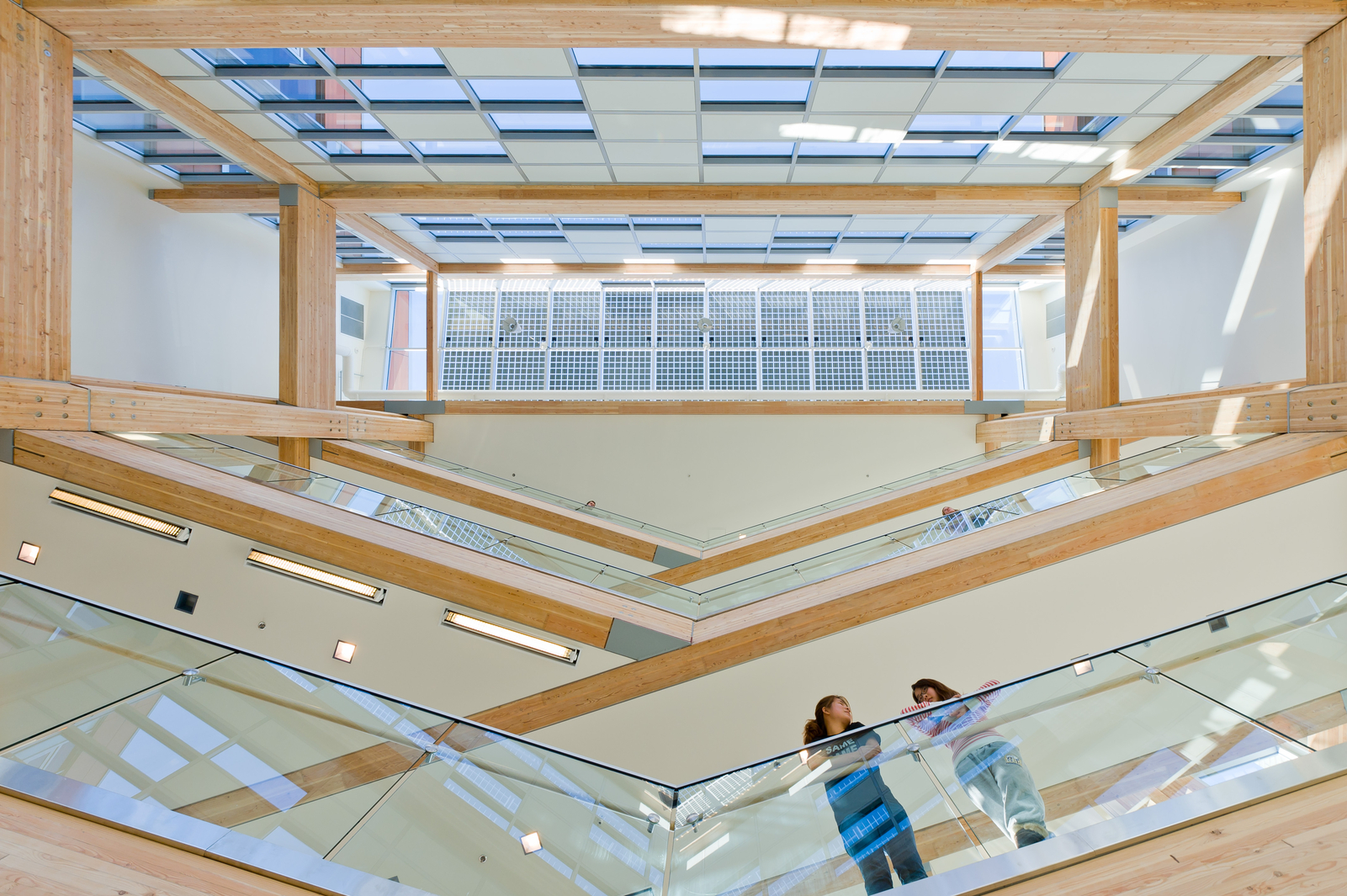Wood as an optimal material to reach sustainability goals
The University of British Columbia policies and guidelines have adopted strong sustainability performance criteria that all building projects and development initiatives must comply with. Under UBC’s Campus as a Living Laboratory (CLL) initiative, the university is developing a sustainability lens for new projects, which determines and evaluates the potential environmental, social and economic impacts of construction and building operations, including methods to measure long-term progress.
The University has determined, through studies such as life cycle assessment (LCA), that wood is an optimal building material due to its structural, aesthetic and low environmental impact characteristics.
As this case study demonstrate, light-frame wood and mass-timber construction has been utilized in a variety of UBC buildings. Moving forward, these buildings provide a foundation for the expanded scope of wood in sustainable buildings, as well as demonstrate the important role that cultural significance, technical capabilities, and environmental benefits play in wood construction.
UBC Centre for Interactive Research on Sustainability (CIRS) | Photo credit: Don Erhardt
